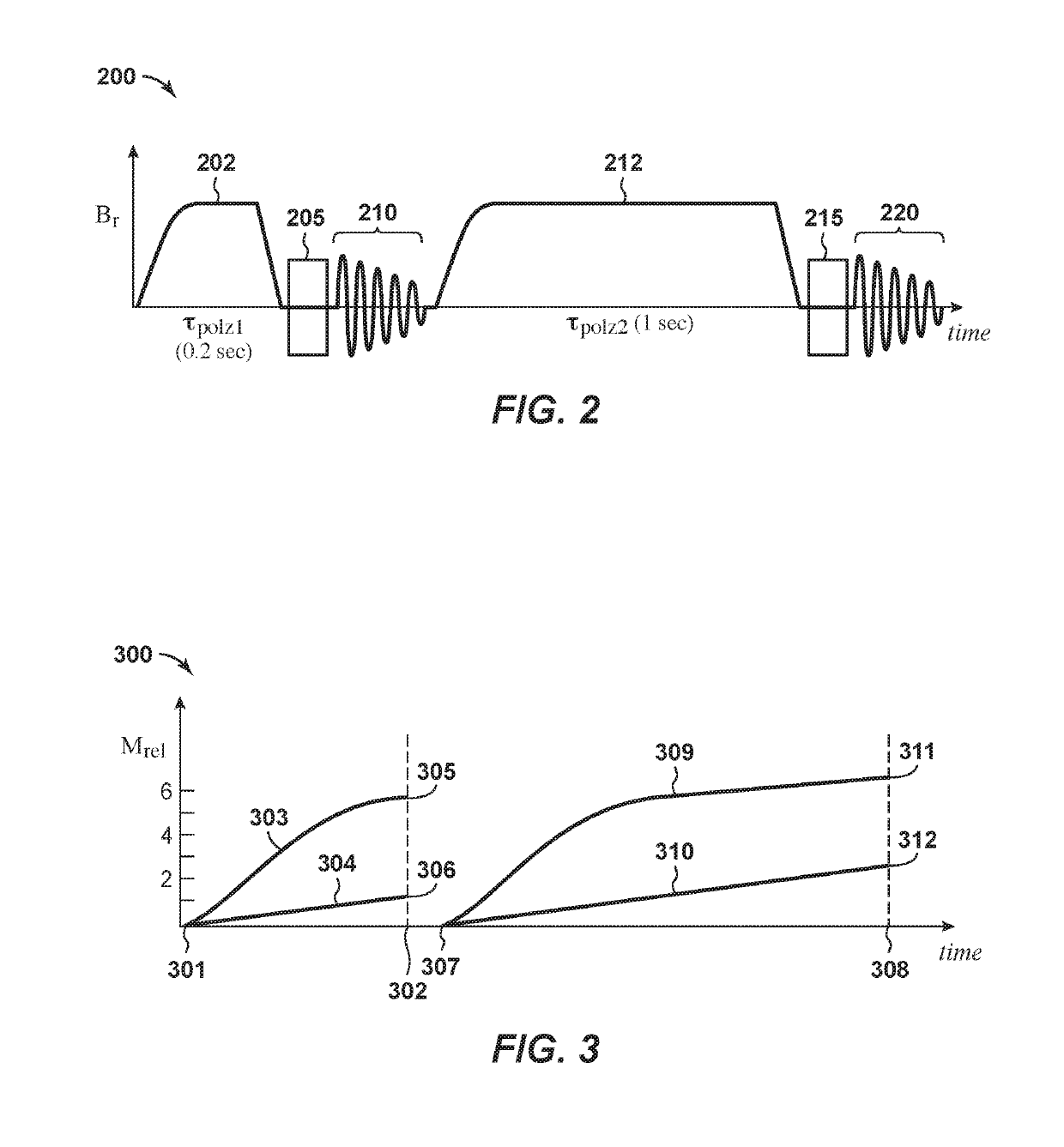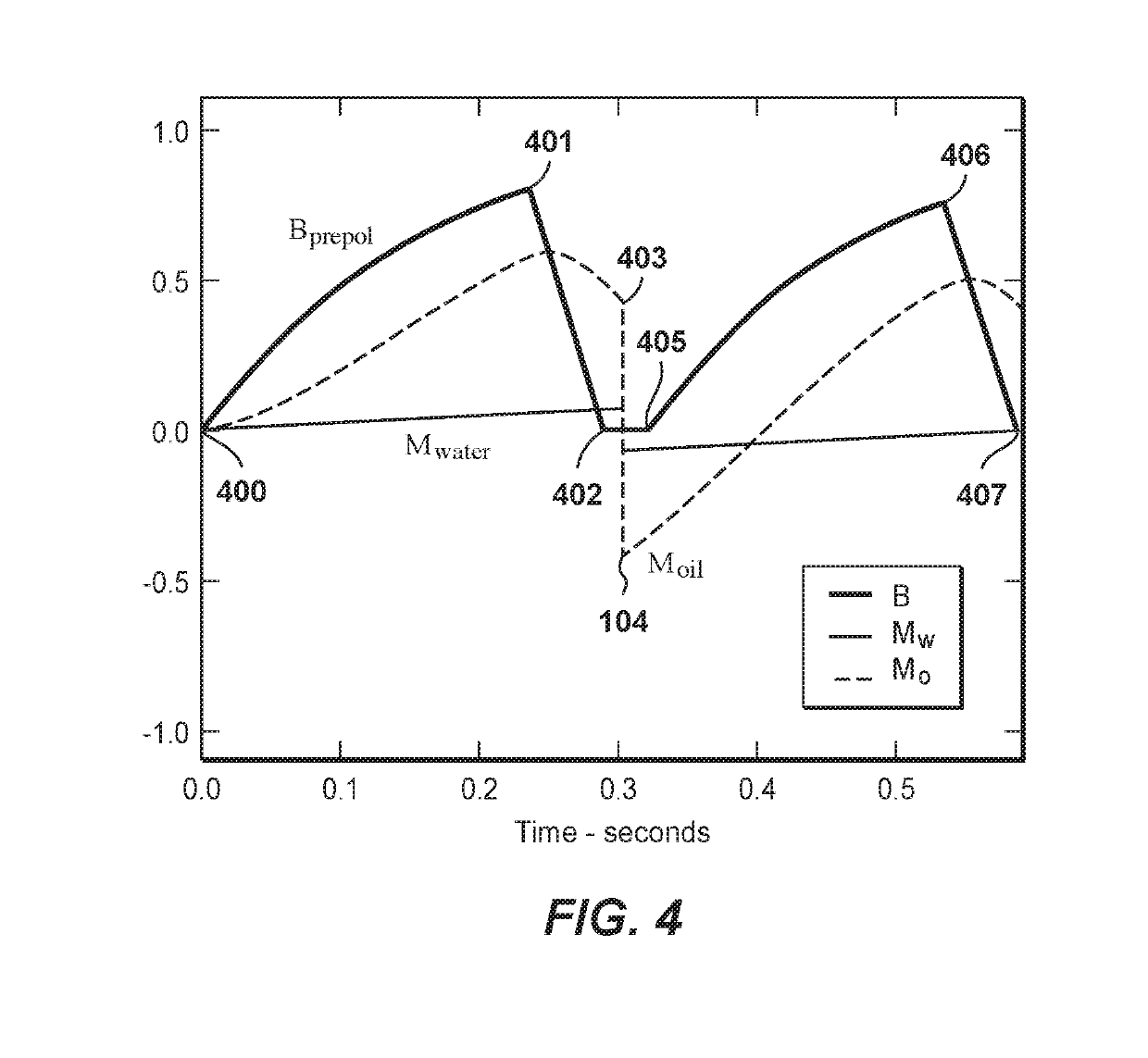Detection of material within a region of the earth using nuclear magnetic resonance
- Summary
- Abstract
- Description
- Claims
- Application Information
AI Technical Summary
Benefits of technology
Problems solved by technology
Method used
Image
Examples
example 1
[0091]This example illustrates double pre-polarization nulling methods in accordance with some embodiments. FIG. 4 is a stylized timing chart illustrating the response of the longitudinal magnetization, Moil and Mwater, for the data acquisition timing sequence described in connection with some embodiments of double pre-polarization nulling (e.g. as shown in FIG. 1). The longitudinal magnetization responses shown in FIG. 4 are for representative fluids, canola oil and water (equal portions of each), which respectively have shorter and longer spin-lattice (T1) relaxation times. The thick line labeled “Bprepol” shows the current in the pre-polarization coils increasing smoothly from time 400 to time 401 (with reference to the x-axis of FIG. 4, approximately t=0 seconds and t=0.25 seconds, respectively). During this time period, the longitudinal magnetization (dashed line labeled “Moil” in FIG. 4) of the canola oil, increases rapidly while the longitudinal magnetization (solid line labe...
example 2
[0098]The NMR spectra shown in FIG. 6 were acquired using a method in accordance with the “double acquisition” methods described herein. The timing sequence of this method is per that illustrated in FIG. 2. The sample used for collecting the NMR data shown in FIG. 6 was comprised of approximately 150 pounds of water and 35 pounds of canola oil. The two fluids were placed in trays and the trays were positioned at various distances above the NMR coil, which was a 60 cm diameter audio Double-D coil made of #12 AQG copper wire. Each single-D was 3 twelve-turn coils in parallel. The two sides were connected in series. The coil had inductance L=0.315 mH and was resonated with about 25 μF. The driving voltage was 5 V peak and the driving current estimated to be about 1 A peak, such that at 6 cm, the magnetic field B1 in the rotating frame at the sample location was about 215 mG. An additional pre-polarization coil was used, having diameter 70 cm, 70 turns, and was driven by 22 V (or about ...
PUM
 Login to View More
Login to View More Abstract
Description
Claims
Application Information
 Login to View More
Login to View More - R&D
- Intellectual Property
- Life Sciences
- Materials
- Tech Scout
- Unparalleled Data Quality
- Higher Quality Content
- 60% Fewer Hallucinations
Browse by: Latest US Patents, China's latest patents, Technical Efficacy Thesaurus, Application Domain, Technology Topic, Popular Technical Reports.
© 2025 PatSnap. All rights reserved.Legal|Privacy policy|Modern Slavery Act Transparency Statement|Sitemap|About US| Contact US: help@patsnap.com



